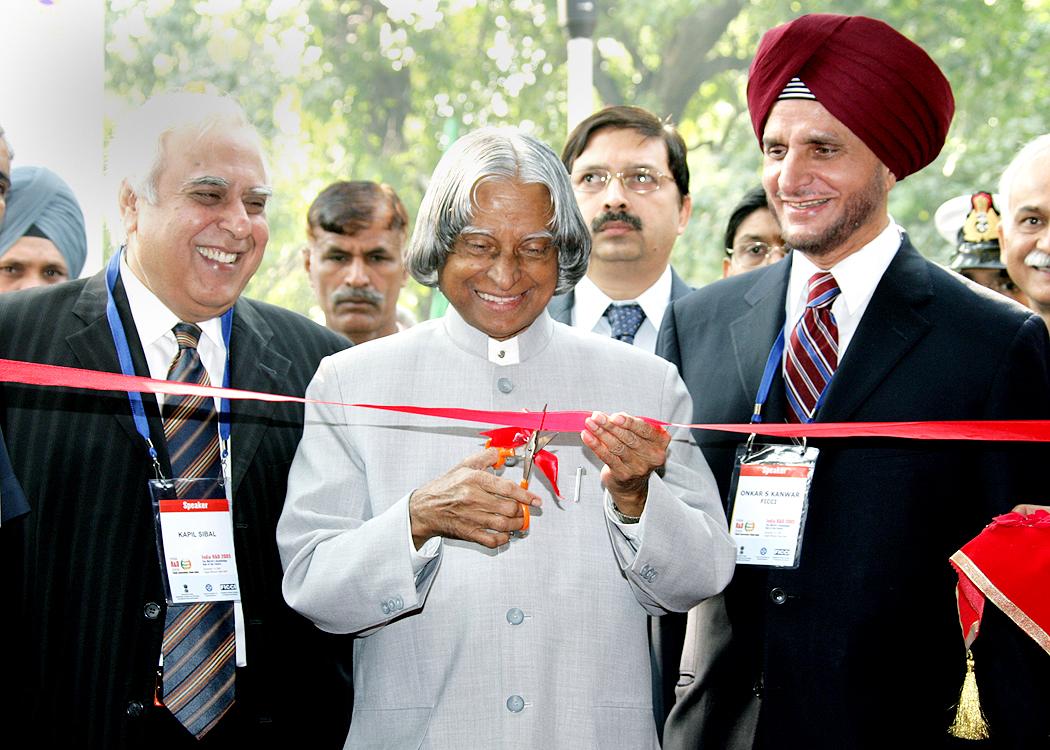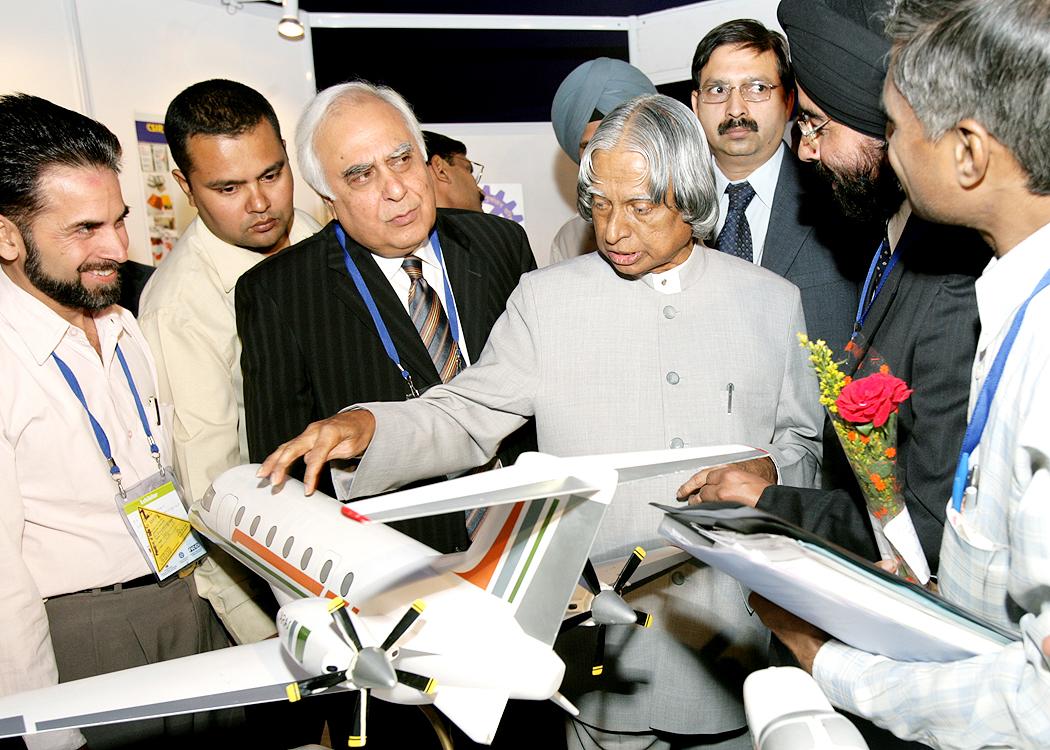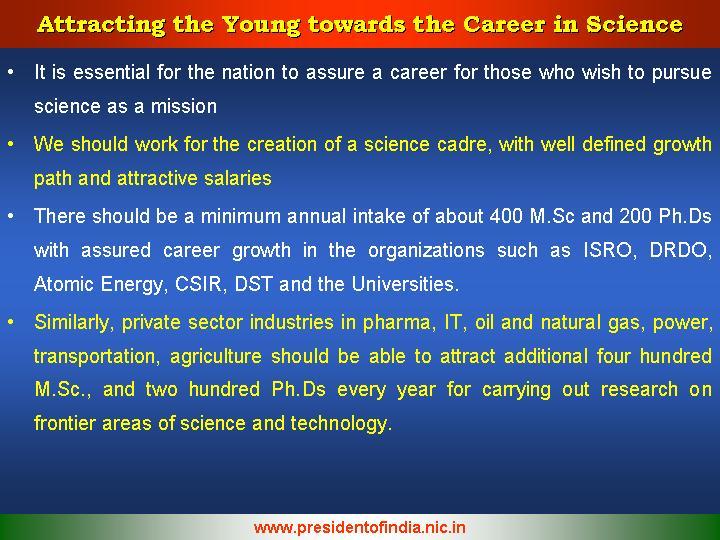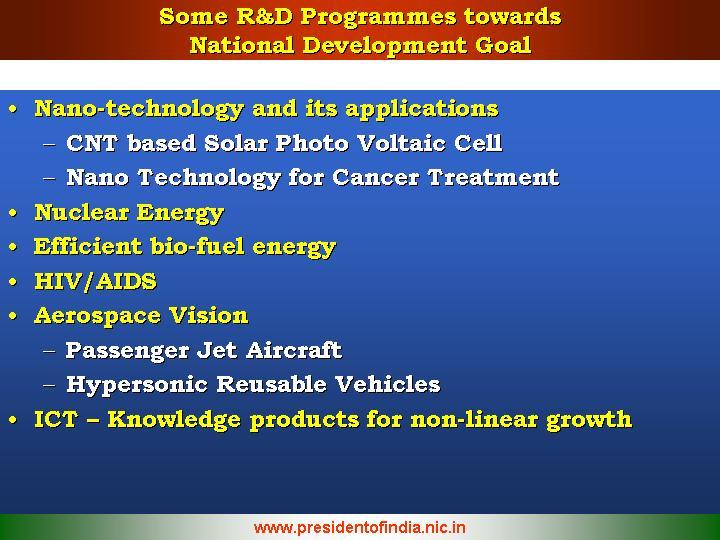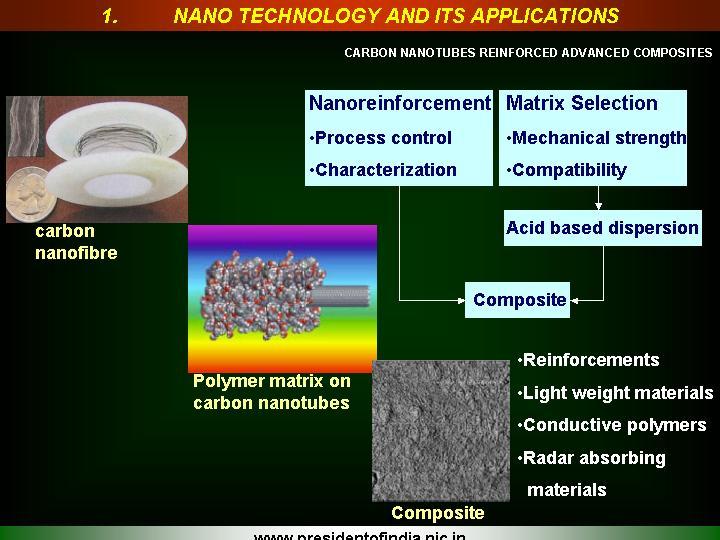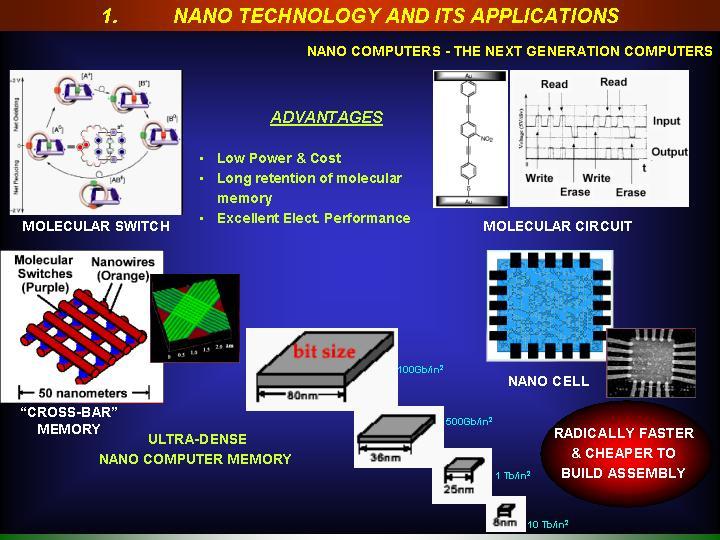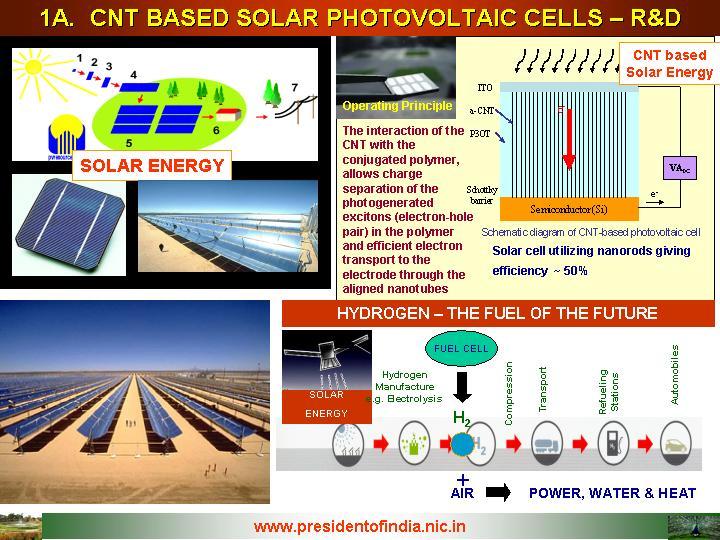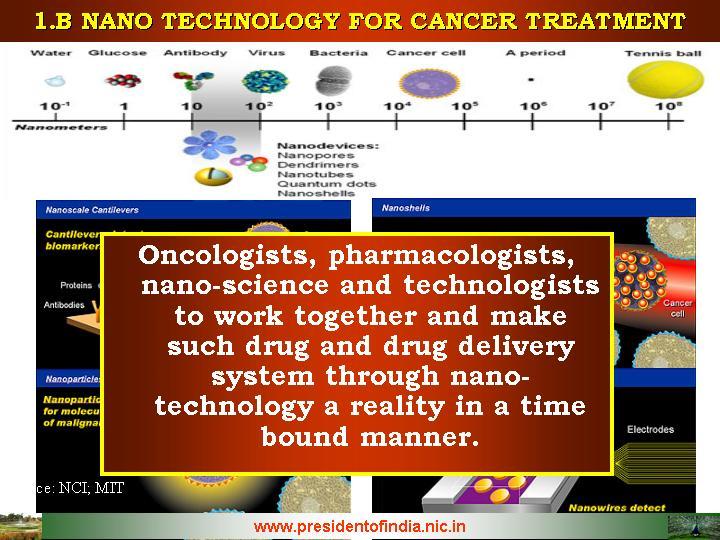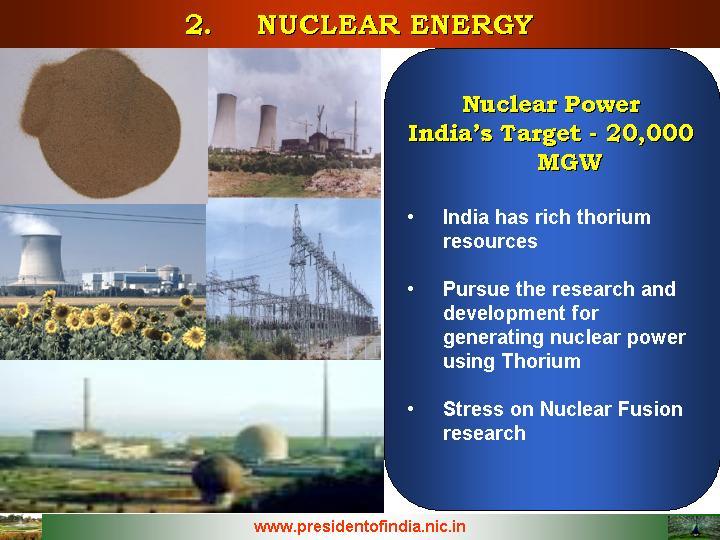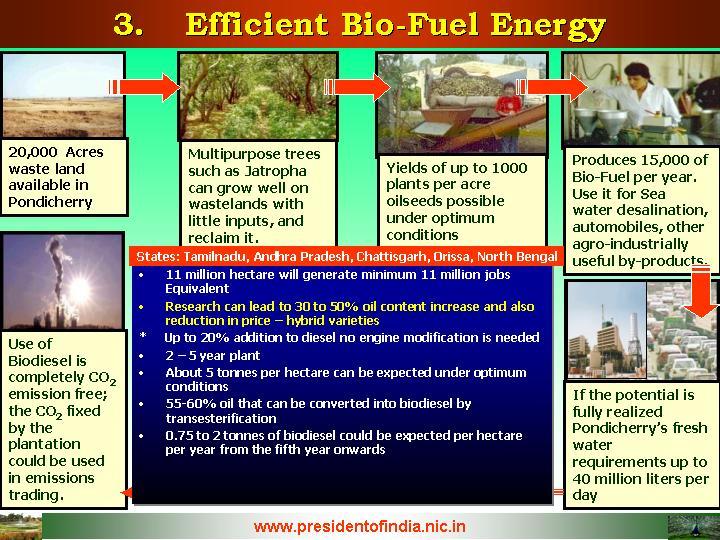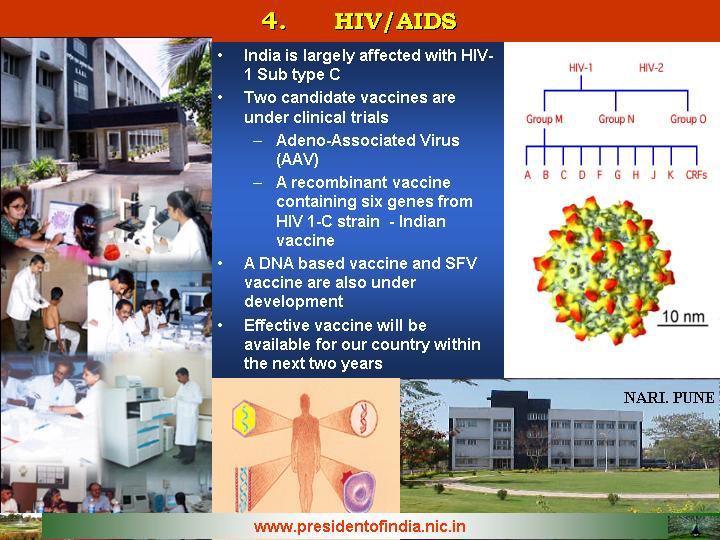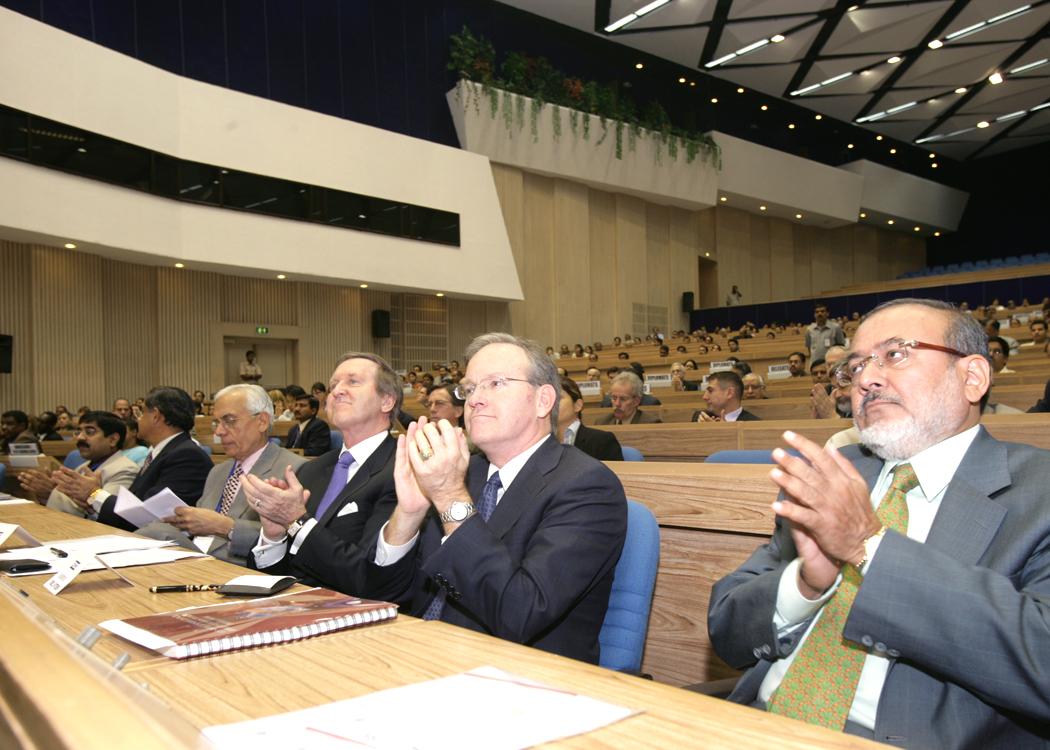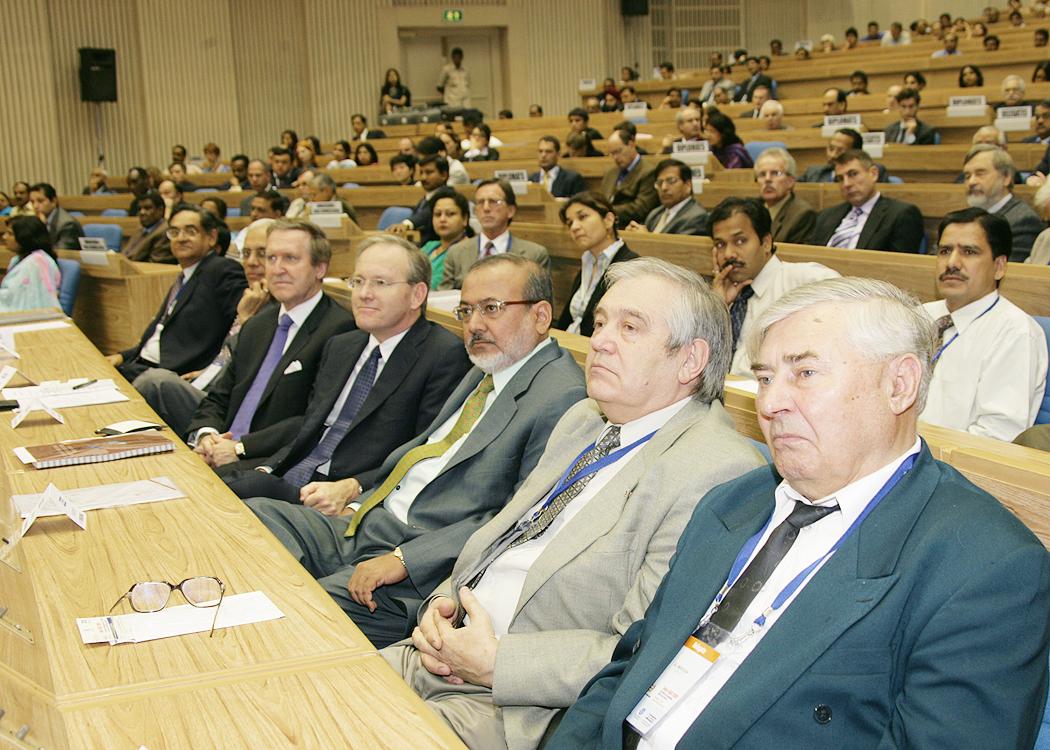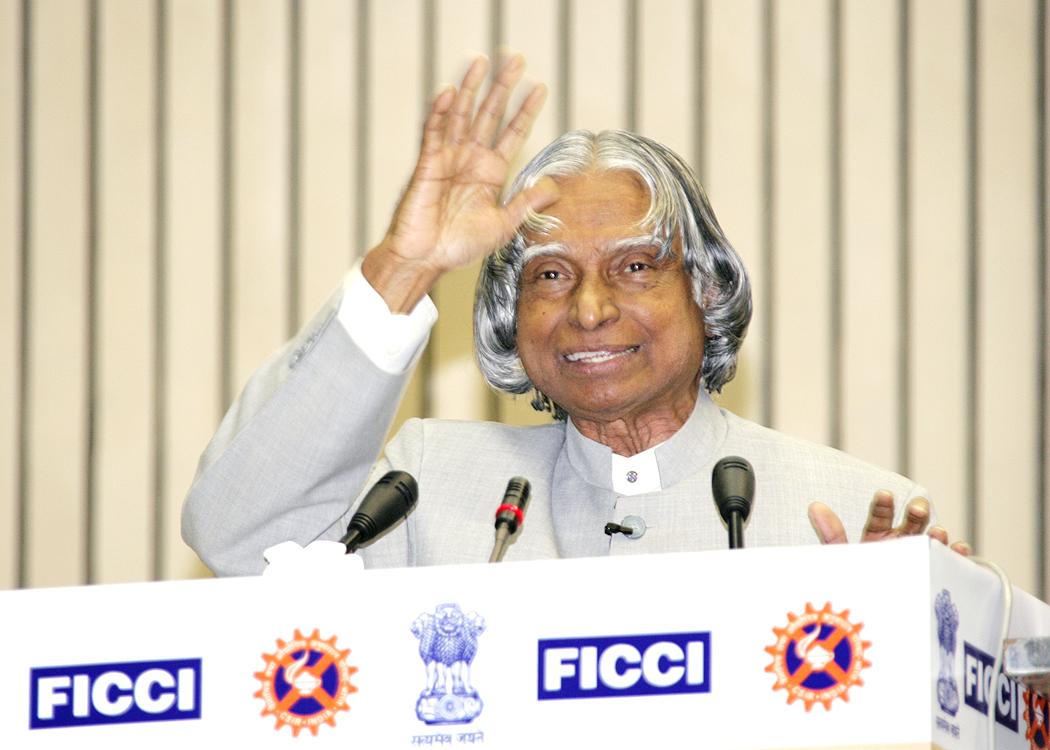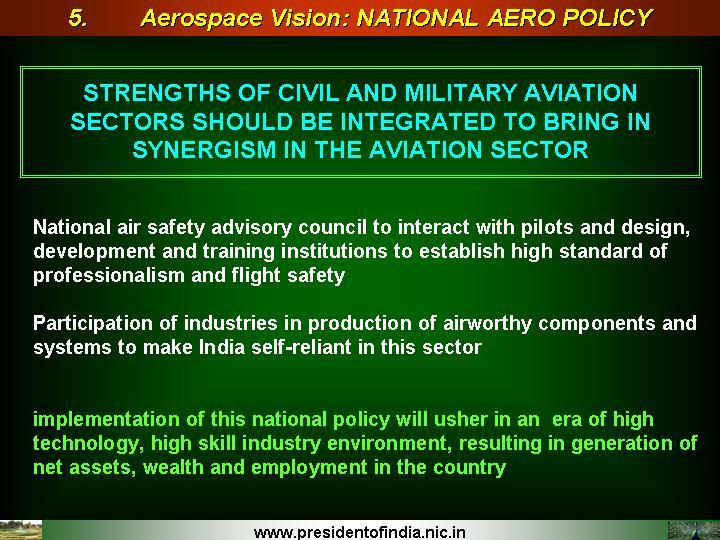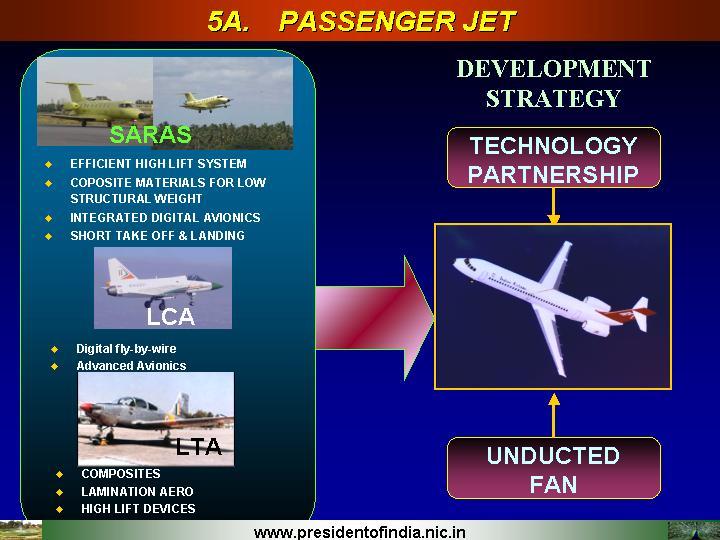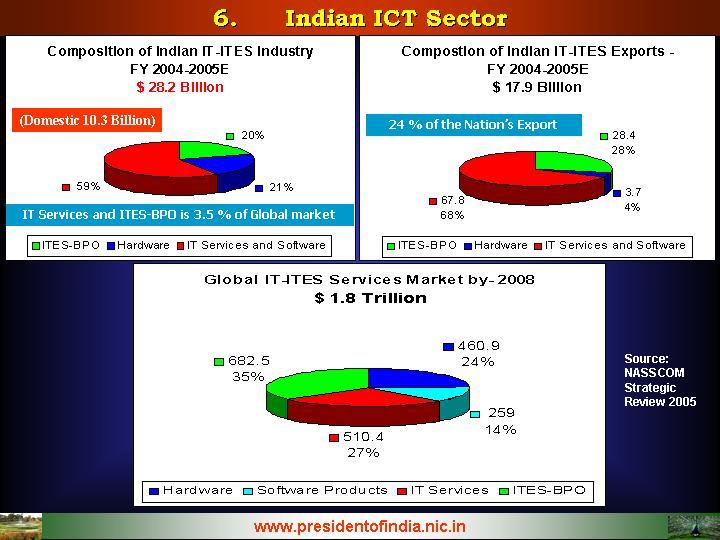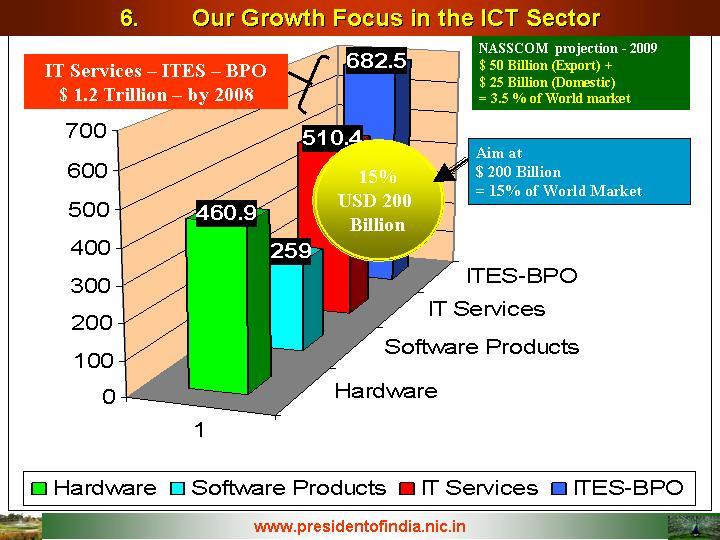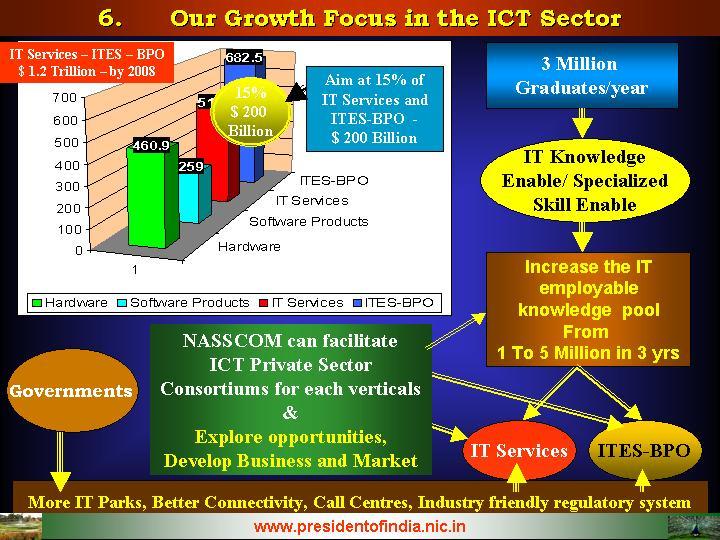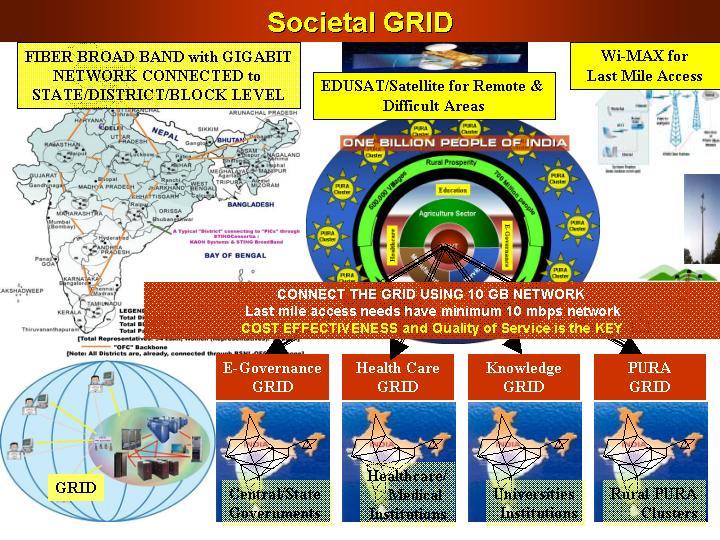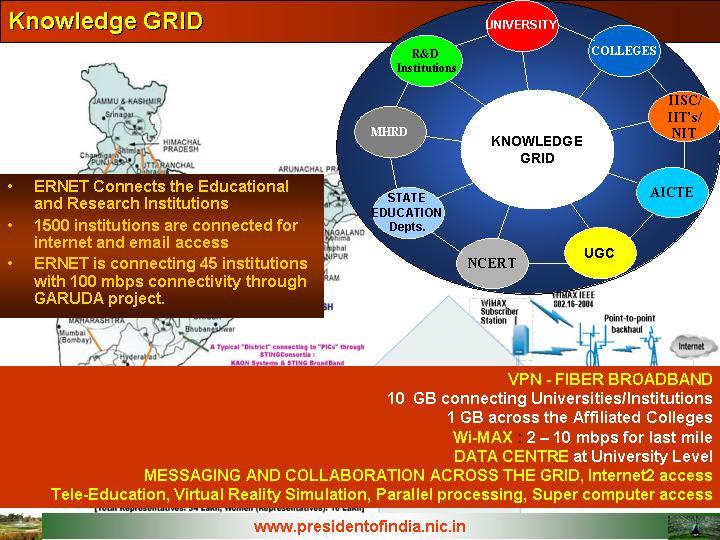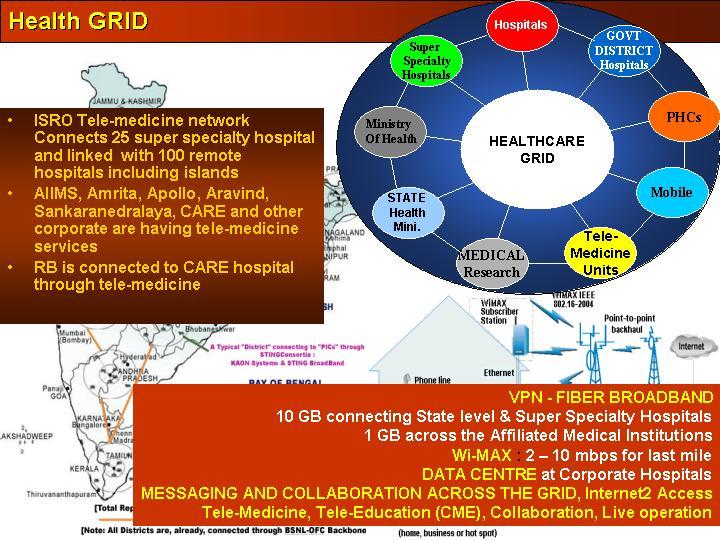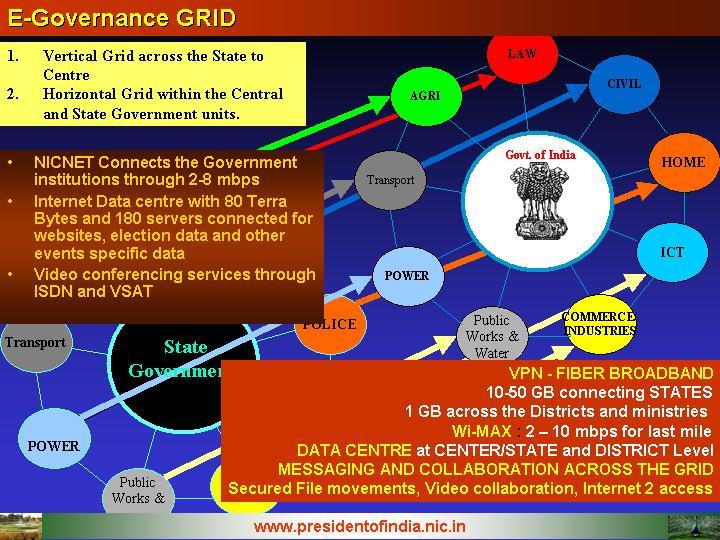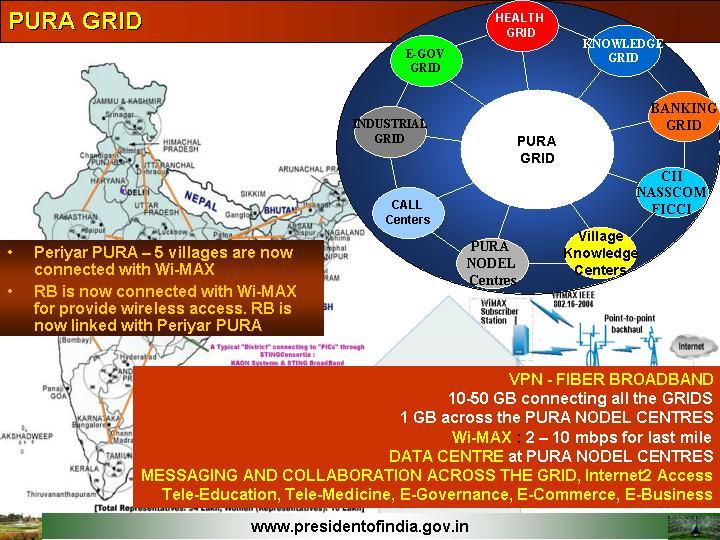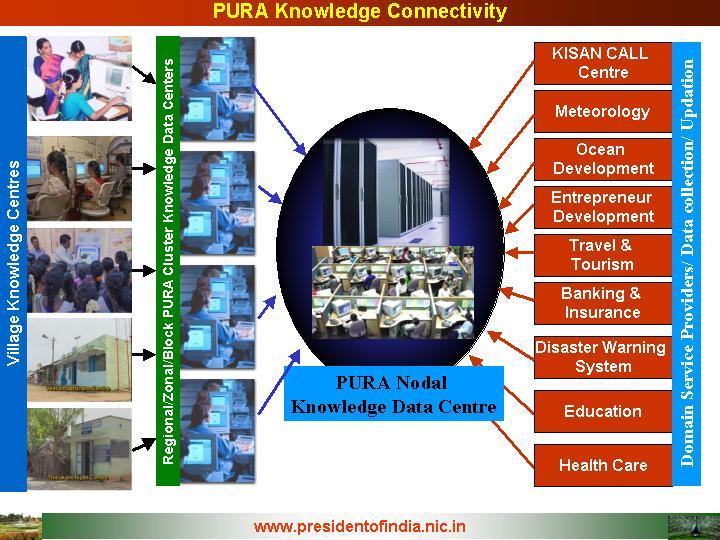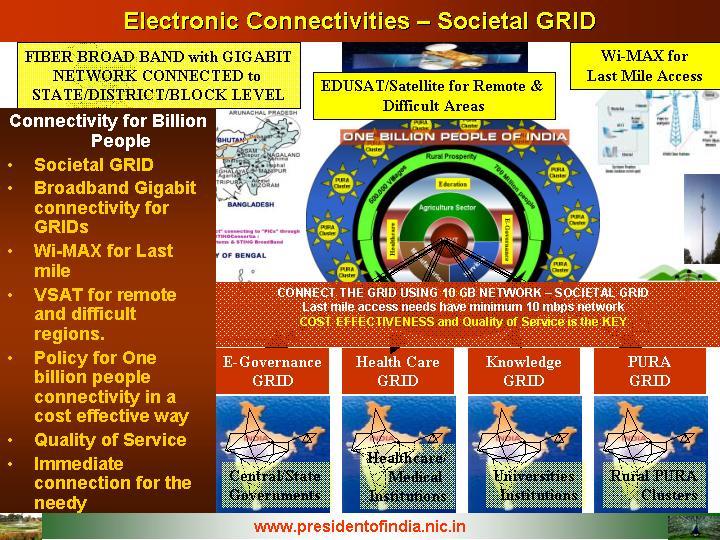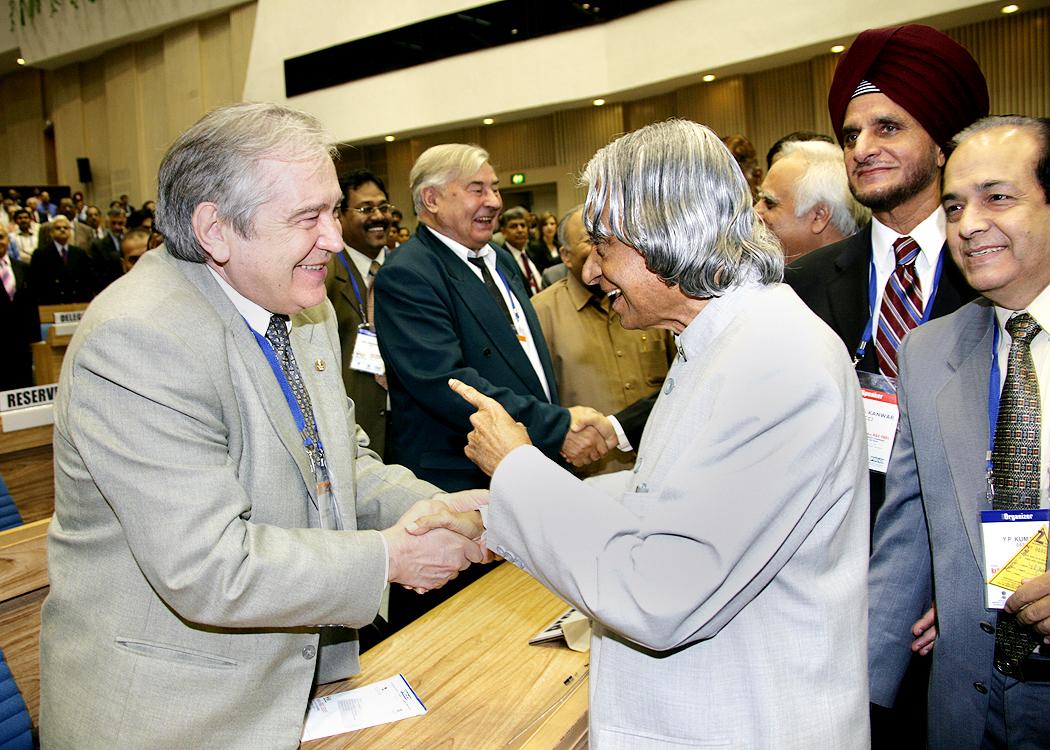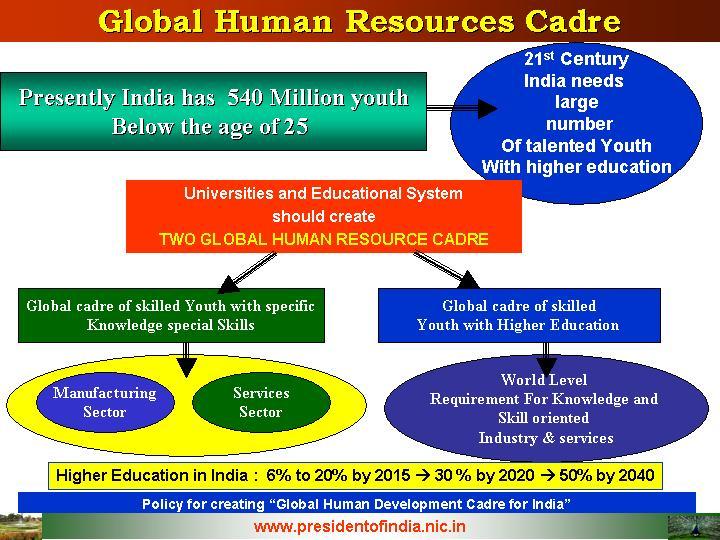Address During The Inauguration Of The Global Conference On 'India R & D 2005: The World'S Knowledge Hub Of The Future', New Delhi
New Delhi : 07-11-2005
Missions for Knowledge HUB
I am delighted to participate in the inauguration of the Global Conference on India R & D 2005 - The World's Knowledge Hub of the Future. I greet the organizers, researchers, scientists, technologists, education planners, industry captains and other distinguished participants of the Conference. I am happy to know that the Conference aims at projecting India as a cost effective knowledge hub of the future and to stimulate investment in terms of more R & D centers being set up in the country. The resultant collaborative and cost effective research will lead to affordable and responsive technologies for the larger good of the humankind. The topic of my discussion "Missions for Knowledge HUB".
The important components needed for the evolution of knowledge Hub are: Attracting youth for science learning and career, Focused National R&D programmes, urge for the industry to become internationally competitive and the need for the electronic and knowledge connectivity through four GRIDS.
Attracting the Young towards the Career in Science
Since my assuming office, I have visited all the States and many Union Territories. During these visits amongst the many people I meet, there will always be young students. I have so far met around 800,000 students, majority of them in the high school below 17 years of age. I have also met the parents of the students. When I meet students, I always ask them, whether they would like to take science as a mission? In a gathering of 1000 students, drawn from geographically distributed schools, I have never found, more than 20 students enthusiastically answering that their mission in life would be science. For example, on 3rd October 2005, I was inaugurating the Virtual University programme of the Universities of Calcutta, Madras and Mumbai through a tele-education delivery system from the multimedia studio of Rashtrapati Bhavan. During my interaction with the students, Ms. Arunava Roy, of 1st Year -Biotechnology from the University of Calcutta asked me the following question:
"A majority of the bright students at the high school level aspire to become a doctor or an engineer. How can these rich minds be motivated towards taking up research as a first grade career option?"
This question is indeed, the reflection of the feelings of most of the students who are in the 10+2 stage. We have to find the right answer. I have had many discussions with parents also. The parents spend almost all their earnings in order to educate their children, since they see the education as the best way of promising an assured career. They even go to the extent of sacrificing their personal luxuries and get loans to educate the children. The only vision they have in their eyes is to see well-settled sons and daughters with guaranteed profession. They see this happen if their children pursue a degree in Engineering, Management, Medicine or administrative services. They do not see the pursuit of pure sciences and research guaranteeing this.
This, I consider as an important area of concern of the nation and it needs the attention of the scientific community as a whole. In my view, we can initiate the following actions.
It is essential for the nation to assure a career for those who wish to pursue science as a mission. This will attract many students with the full support of the parents. We should work for the creation of a science cadre, with well defined growth path and attractive salaries. There should be a minimum annual intake of about 400 M.Sc and 200 Ph.Ds with assured career growth in the organisations such as ISRO, DRDO, Atomic Energy, CSIR, DST and the Universities. Similarly, private sector industries in pharma, IT, oil and natural gas, power, transportation, agriculture should be able to attract additional four hundred M.Sc., and two hundred Ph.Ds every year for carrying out research on frontier areas of science and technology.
R&D Programmes meeting National Goal
Now I would like to discuss some of the key areas of research and Development, which will have global implications and also meeting the National requirements.
1. Nano-technology and its applications: The world market in 2004 for nano materials, nano tools, nano devices and nano biotechnology put together is over hundred billion dollars. It has been noticed that the fastest growing area among these is nano-biotechnology.
Carbon nano tubes and its composites will give rise to super strong, smart and intelligent structures in the field of material science. Nano-Biomedical sensors will play a major role in glucose detection and endoscopic implants. Drug delivery system will revolutionize the health-care to a large extent.
Molecular switches and circuits along with nano cell will pave the way for the next generation computers. Ultra dense computer memory coupled with excellent electrical performance will give the society low power, low cost, nano size and yet faster assemblies.
The last four decades have also affected the packaging concept. Electronics packaging of the past has given way to the present Microsystems packaging and the shift in the trend is now towards the futuristic nano packaging. We have to choose our own area of research and participate in the nano science technology revolution, which is just round the corner.
CNT based Solar Photo Voltaic Cell: Energy Independence has to be our nation's first and highest priority. We must be determined to achieve this within the next 25 years i.e by the year 2030. This one major, 25-year national mission must be formulated, funds guaranteed, and the leadership entrusted without delay as public-private partnerships to our younger generation, now in their 30's, as their lifetime mission in a renewed drive for nation-building. One of the key areas of research is improving the efficiency of solar photovoltaic energy system.
Presently, silicon photovoltaic cells work with an efficiency of 13% to 15%, whereas research has already shown promise of achieving 50% efficiency in solar photo voltaic cells with CNT and silicon bonding. This is an important work, which will revolutionize the use of solar energy for meeting the energy demands of many countries in the planet. Presently, Rashtrapati Bhavan is working on a project for creation of a five-megawatt solar energy power plant for meeting the energy needs of the Rashtrapati Bhavan. The capital cost of this unit will work out to approximately Rs. 100 crore. If the high efficiency photovoltaic cell is available the cost of the plant will come down by 60% in addition to substantial reduction in space utilization and the structure created for the plant. Thus, this research is a vital area for getting cost and space effective solar power plants in India and in other countries. Educational institutions, R & D organizations and the industry should mount a mission mode programme to realize quantity production and marketing of the high efficiency CNT based photovoltaic cell within the next three years. In notional terms there will be a minimum saving of two lakh crore in capital cost for establishing 50,000 megawatts of solar power out of hundred thousand megawatt of power from renewable energy sources required for realizing energy independence in the country.
Nano Technology for Cancer Treatment: Nano-technology can find application in spotting cancer earlier than it can be done now. It can also enable highlighting tiny clusters of cancer cells and help the doctors detect whether cancer has spread or shrinking in response to treatment without the need for surgery. The third application could be to send the drugs encased in packages small enough to slip through cancer cell walls, kill tumour without damaging healthy cells thus reducing the side effects of treatment. All these areas are promising applications and there is a need for the Oncologists, pharmacologists, nano-science and technologists to work together and make such drug and drug delivery system through nano-technology a reality in a time bound manner.
2. Nuclear Energy: Nuclear power generation has been given a thrust by the use of uranium-based fuel. However there would be a requirement for a ten-fold increase in nuclear power generation even to attain a reasonable degree of energy self-sufficiency for our country. Therefore it is essential to pursue the development of nuclear power using Thorium, reserves of which are higher in the country. Research and technology development has to be accelerated for Thorium based reactors since the raw material for Thorium is abundantly available in our country. Also, nuclear fusion research needs to be progressed with international cooperation to keep that option for meeting the large power requirement, at a time when fossil fuels get depleted. This research will be useful for many countries in the world. From Indian point of view we will be able to realize the goal of producing at least fifty thousand megawatt of power through nuclear source.
3. Efficient bio-fuel energy: Presently, the oil yield from the seeds of bio-fuel plants is just around 30% of the seed weight. Intensive research is required to increase the oil yield from the present 30% to at least 50%, which will enable the reduction in basic cost of bio-fuel per liter from the existing Rs. 20 to around Rs. 12. This reduction will also provide adequate incentive to the farmer for cultivating bio-fuel plants in the field for generating large revenue compared to what he is getting now. This research will enable the country to save an additional Rs. 10,000 Crore in foreign exchange, which is being now incurred for importing fossil fuel. Intensive research is also required to burn bio-fuel in internal combustion engines with high efficiency. This also is an urgent R&D programme.
4. HIV/AIDS: It is reported that in India number of HIV infected people is on the increase. It is critical that the transmission of HIV infection is prevented. An effective vaccine that can prevent this disease will be a cost effective tool for control of infectious diseases. There are three Sub Types of Viruses classified as A, B and C. I understand that Indian population is largely affected by sub-type C virus.
There are two candidate vaccines presently considered for use against sub type C virus in our country. In view of the urgency of finding a cost effective vaccine, the expert group reviewed the vaccine candidate for HIV sub type C in the pipeline. Adeno-Associated Virus (AAV) based vaccine with HIV-1 sub type C (African strain) developed by Targetted Genetics Corp, USA was found to be in advanced stage of test in different parts of the world. This HIV vaccine (tgAAC09) is now undergoing Phase-I trial for safety and immunogenicity assessment in healthy HIV uninfected volunteers at National AIDS Research Institute, Pune.
The Indian vaccine has been developed by scientists from National Institute of Cholera and Enteric Diseases in collaboration with National Aids Research Institute, Pune and Therion Biologics, USA. This is a recombinant vaccine containing six genes from HIV 1-C strain. This vaccine was developed from the virus isolated from National Aids Research Institute, Pune. This will go into Phase-I trial in healthy uninfected adults at Tuberculosis Research Centre, Chennai during this year. Both these programmes are being progressed as a joint venture between ICMR, National Aids Control Organisation (NACO) and International Aids Vaccine Initiative. In addition to these two vaccines a DNA based vaccine and SFV vaccine are also under development.
Time has, now arrived to take up this development in a mission mode so that an effective vaccine will be available for our country within the next two years. Simultaneously, I would suggest that the medical community must start working on the development of anti-vaccines for sub-type A and B also.
5. Aerospace Vision: With our national strength and opportunity for larger demand in aerospace systems and export potential, a large business for industries is in front of us. It is essential that this strength be integrated into a National Aeronautics Policy for integrating the strengths of both civil and military aviation sectors to bring synergy in the aviation sector. Implementation of this policy will usher in an era of high technology and high skill industry environment resulting in generation of assets, wealth and employment opportunities in the country. National Aeronautical Policy is being progressed now, I am sure that it will lead to the formation of Aeronautical Commission. Design, development and production of 200 seater Aircraft and the hypersonic reusable vehicle are the important missions in front of the nation.
a. Passenger Jet Aircraft: A study undertaken by the committee of experts on India's vision 2020 has come out with a large potential for possible aircraft to be produced in India. The technology vision document has concluded that it will be economically viable to produce a 150-seater aircraft in India. What is needed is to integrate the strength available in the country in a mission mode. With technology partnership between aerospace industries and academic institutions the Indian made passenger aircraft will become a reality.
The development of passenger aircraft calls for many complex technologies to be mastered. For example, the improvement of fuel efficiency using unducted fan is a great challenge. Identifying international collaborators and partners for joint development of many appropriate technologies at the initial phase itself would be required. This will also increase the potential for marketing in the international scene as well. This will be another area of research and development urgently needed for giving a fillip to air transportation industry.
b. Hypersonic Reusable Vehicles: Hypersonic reusable vehicles is an emerging area to achieve greater speeds using Ramjet and Scramjet engine. A study has been presently carried out for an air launched reusable hypersonic vehicles flying at an altitude of 30-40 km. in cruise mode at mach 7 to a range of 2000 km and fly back to the launch point.
This type of missions will be highly useful for multiple applications. In the case of Hyperplane, the aim was to achieve larger payload fraction. The space shuttle of USA with 2000 tonnes take off weight could launch only 30 tonnes in low earth orbit, giving a payload fraction of 1.5%. India's concept of Hyperplane aims to realise 15% of payload fraction. This will considerably reduce the launch cost per mission and will enable multiple missions such as transport, reconnaissance, payload delivery, satellite injection etc. A typical mission of Hyperplane takes off with 100 tonnes weight using fan ramjet engine, works on scramjet mode for nearly 1000 sec. during which time, it collects the left over air, cools it and separates as liquid oxygen. This increases its weight to 166 tonnes, thereafter it flies in rocket engine mode using the liquid oxygen and stored liquid Hydrogen to deliver a payload of 15-16 tonnes. This concept of mass addition in flight is unique and conceived by Indian scientists. Hypersonic Technologies include scramjet propulsion, air liquefaction, high temperature materials, guidance control and software package. I visualize space transportation to become a reality within the next two decades. Some countries have already started booking places on the moon. It is essential to visualize the future and embark on a collaborative programme for making hypersonic reusable launch vehicle a reality.
6. ICT - Knowledge products for non-linear growth: For India to become a leader in the knowledge era, it is necessary to have revenue per capita almost increased by an order of magnitude. To achieve this our software industry has to move up the value chain and come up with innovative products that will have an order of magnitude commercial impact in the international market. I am confident that the Indian IT Industry is capable of undertaking such mega missions. Development of knowledge products should become the prime focus of exclusive R & D Units created as joint venture projects. The aim should be to capture at least 15% of the Global business volume in the ITES (IT enabled Services) and BPO sectors around 200 billion dollars out of 1.2 trillion dollar. Software products accounts for 260 billion dollars of Global business. At least we should work for a market share of 10% in the beginning. Hence the total market share for India should be 200 plus the additional 26 billion dollars.
So far we have discussed some of the important R&D programmes in various sectors of the knowledge society towards meeting the national development requirements. Now I would like to talk about the connectivity mission needed to bridge the components of the knowledge society and enable the nation to develop and produce the products in cost effective manner.
Electronic Connectivity and GRIDs
The electronic connectivity for one billion people must transform into a network and provide a seamless access between knowledge creator, converter of knowledgeable products and the knowledge consumers. This can be achieved through the creation of knowledge grid, health grid, governance grid and PURA Grid.
To maximize the synergy between the grids, leading to maximization of GDP and productivity, there is a need for inter-grid Connectivities, which may be called as societal grid. Knowledge sharing, knowledge utilization and knowledge re-use is very vital by all constituents of the society for promoting non-linear growth. Societal Grid consists of:
1. Knowledge GRID - Inter connecting universities with socio-economic institutions, industries and R&D organizations.
2. Health Care GRID - Inter-connecting the Health Care institutions of Government, Corporate and Super specialty hospitals. Research institutions, educational institutions and ultimately, Pharma R & D institutions.
3. E-Governance GRID - Inter-connecting the Central Government and State Governments and District and Block level offices for G2G and G2C connectivity.
4. PURA Knowledge GRID - Connecting the PURA Nodal centers with the Village knowledge centres and Domain service providers. Since this is the backbone for rural development, all other GRIDs will infuse the knowledge into this GRID for sustainable development, healthcare and good governance. For example, five of the Periyar PURA villages have now connected using Wi-MAX connectivity. .
Integrated village knowledge centers: will act as an inter-connected delivery mechanism for tele-education tele-medicine and e-Governance services apart from individual access by the people, within and between the Village Knowledge Centres through the PURA Grid.
Bandwidth as an infrastructure: In order to make the country the most advanced knowledge society, we should aim at making the bandwidth available without hindrance and at no cost. Making the bandwidth available is like the Government laying the roads. Movement of materials through these roads creates wealth in the industrial economy and the government recovers more than the investment on the roads by way of taxes and enhanced prosperity of its people. In the modern digital economy driven by knowledge products, bits and bytes traverse the network and create wealth and this will recover the cost of investments in the bandwidth. Cost effective creation of the four Grids and inter connectivity between Grids is the profound platform for collaborative research, development and deployment.
Conclusion: Global Human Resources Cadre
In the 21st century, India needs large number of talented youth with higher education for the task of knowledge acquisition, knowledge imparting, knowledge creation and knowledge sharing. At present India has five hundred and forty million youth under the age of 25 which will continuously be growing till the year 2050. Keeping this resource in mind, the Universities and educational systems should create two cadres of personnel: (1) a global cadre of skilled youth with specific knowledge of special skills (2) another global cadre of youth with higher education. These two cadres will be required not only for powering the manufacturing and services sector of India but also will be needed for fulfilling the human resource requirements of various countries. Thus, the universities will have to work towards increasing the through put of the higher education system from the existing 6% to 20% by the year 2015, 30% by the year 2020 and 50% by the year 2040. The other Indians who are not covered by the higher education system should all have world class skill sets in areas such as construction, carpentry, electrical systems, repair of mechanical systems, fashion design, para-legal, para-medical, accountancy, sales and marketing, software and hardware maintenance and service, software quality assurance personals etc. No Indian youth should be without either a world-class higher education or without world-class skills sets. This is the mission, which must be undertaken by all our Universities and the educational systems. We have to start right now to realize this goal since the overall time available for such an educational growth is short. A National Policy for creating a "Global Human Development Cadre for India", has to emerge.
So far I have placed my thoughts before you. Finally, I would suggest the research and development community assembled here to discuss the following questions during the deliberations in the conference.
1. How you do relate solving the problems of the people of the country to Research, Development and Production.
2. How do you contribute at the Global level in giving competitive edge, wealth and prosperity?
3. What are problems, suggestions and solutions: Water, Energy, Health care, Education, Employment and Livelihood
My best wishes to the members of the Global Conference on India R & D 2005 - The World's Knowledge Hub of the Future for success in their mission of making India a preferred destination for carrying out research needed for societal transformation of the planet Earth.
May God bless you.


